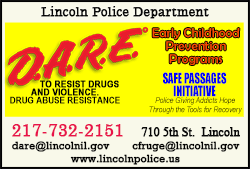|
 The over-the-counter products originally marketed to prevent sunburn
with little regulation are widely used to block radiation from the
sun that can cause skin cancer, the most common malignancy in the
United States. The over-the-counter products originally marketed to prevent sunburn
with little regulation are widely used to block radiation from the
sun that can cause skin cancer, the most common malignancy in the
United States.
The study of 23 volunteers tested four sunscreens, including sprays,
lotion and cream, applied to 75 percent of the body four times a day
over four days, with blood tests to determine the maximum levels of
certain chemicals absorbed into the bloodstream conducted over seven
days.
The study found maximum plasma levels of the chemicals it tested for
- avobenzone, oxybenzone, octocrylene and in one sunscreen ecamsule
- to be well above the level of 0.5 nanograms per milliliter (ng/mL)
at which FDA guidelines call for further safety testing.
For example, the maximum concentration of avobenzone was found to be
4 ng/mL and 3.4 ng/mL for two different sprays, 4.3 ng/mL for a
lotion and 1.8 ng/mL for the cream.
Researchers did not name the products used in the study.
The effects of plasma concentrations exceeding the FDA's limit is
not known and needs to be further studied, the research team wrote
in the Journal of the American Medical Association (JAMA).
The results in no way suggest that people should stop using
sunscreen to protect against the sun's harmful ultraviolet (UV)
rays, researchers said.


[to top of second column] |

"The demonstration of systemic absorption well above the FDA
guideline does not mean these ingredients are unsafe," Dr. Robert
Califf and Dr. Kanade Shinkai said in an editorial that accompanied
the study in JAMA.
"The study findings raise many important questions about sunscreen
and the process by which the sunscreen industry, clinicians,
specialty organizations, and regulatory agencies evaluate the
benefits and risks of this topical OTC medication," they added.

David Andrews, a senior scientist at the nonprofit health and
environmental advocacy group Environmental Working Group, called for
thorough testing of sunscreen ingredients.
"For years the sunscreen chemical manufactures have resisted common
sense safety testing for their ingredients and now FDA is proposing
that these common ingredients must undergo additional testing to
stay on the market," Andrews said.
However, the Personal Care Products Council trade association
pointed out limitations of the study and expressed concern that it
may confuse consumers.
Sunscreens in the study were used at "twice the amount that would be
applied in what the scientific community considers real-world
conditions," said Alexandra Kowcz, the group's chief scientist.
(Reporting by Manas Mishra in Bengaluru; editing by Bill Berkrot)
[© 2019 Thomson Reuters. All rights
reserved.] Copyright 2019 Reuters. All rights reserved. This material may not be published,
broadcast, rewritten or redistributed.
Thompson Reuters is solely responsible for this content. |